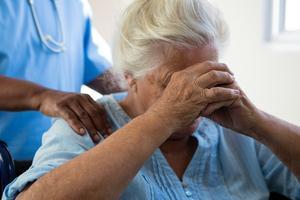When is it Safe and Reasonable to Restrain a Nursing Home Resident in Illinois?
 Illinois nursing home residents are often elderly, sick, and particularly susceptible to abuse or victimization from staff who claim to restrain residents who are a threat to their own safety. While there is no question that some nursing home residents may be unable to safely control their movements and could accidentally hurt themselves or others, there are safe and appropriate ways to use restraints. When restraints or restraining techniques are improperly used, they can be dangerous to patients. It is important to understand how and when nursing home facilities should use restraints so you can be on the alert for potential abuse of your loved one.
Illinois nursing home residents are often elderly, sick, and particularly susceptible to abuse or victimization from staff who claim to restrain residents who are a threat to their own safety. While there is no question that some nursing home residents may be unable to safely control their movements and could accidentally hurt themselves or others, there are safe and appropriate ways to use restraints. When restraints or restraining techniques are improperly used, they can be dangerous to patients. It is important to understand how and when nursing home facilities should use restraints so you can be on the alert for potential abuse of your loved one.
Common Types of Physical Restraint in Nursing Homes
Physical restraints can vary and depend on the particular issue that a resident is having. They may be devices, materials, or equipment that is near or attached to a patient’s body that is not easily removed. Common types of restraints include:
-
Soft ties
-
Bedrails
-
Mitts that obstruct finger usage
-
Belts
-
Lap tables, trays, or cushions
-
Special chairs
-
Vests
Many people are concerned about nursing home restraints because they can have harmful and even dangerous effects on residents. They can cause pain and discomfort, emotional distress, and, when overused, atrophied muscles and bedsores. Atrophied muscles can lead to further difficulty moving and accompanying immobility complications. Whatever type of physical restraint a nursing home uses, it is important to exhaust other safety techniques before using restraints.
Frequent Restraint Use May Indicated Understaffing or Neglect
Some nursing homes use restraints because they do not have the necessary staff levels to manage their residents safely. Restraints become a stand-in for appropriate supervision and assistance and, in the worst cases, may cover up more serious signs of abuse or neglect. A patient who cannot walk because they are restrained may, in fact, be unable to walk because of another issue, like an infection or sprain. Physical restraints should never be used as physical punishment or psychological control, but unfortunately, sometimes this does happen.
Call a Chicago, IL Nursing Home Abuse Lawyer
If you are concerned that your loved one has been a victim of unreasonable or unsafe restraint use in their nursing home, call an experienced Chicago, IL nursing home abuse and neglect attorney with Schwartz Injury Law right away. We offer free case reviews so we can get more information about your case and help you decide whether you want to take further action. Call us today at 312-535-4625.
Source:
https://www.ilga.gov/legislation/ilcs/ilcs5.asp?ActID=1225&ChapterID=21
https://academic.oup.com/ageing/article/46/4/536/2993054

 312-535-4625
312-535-4625





